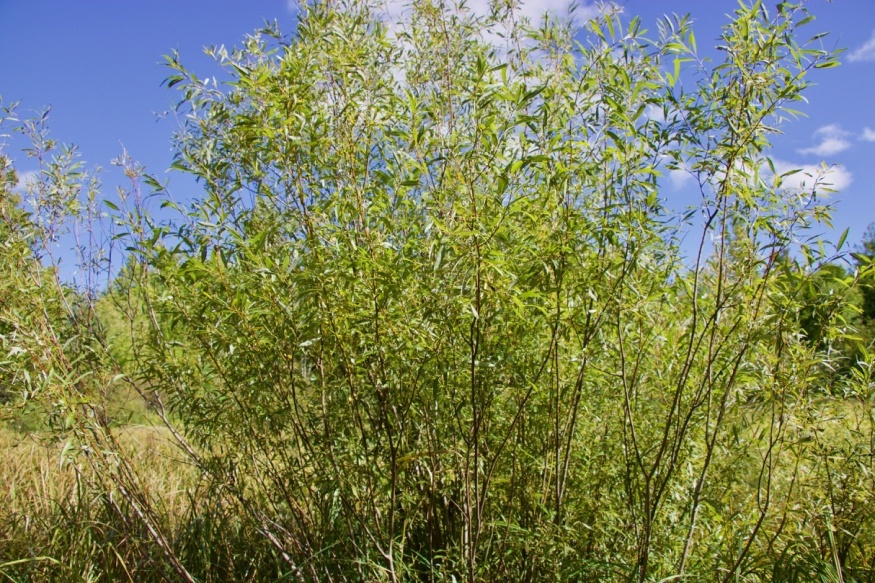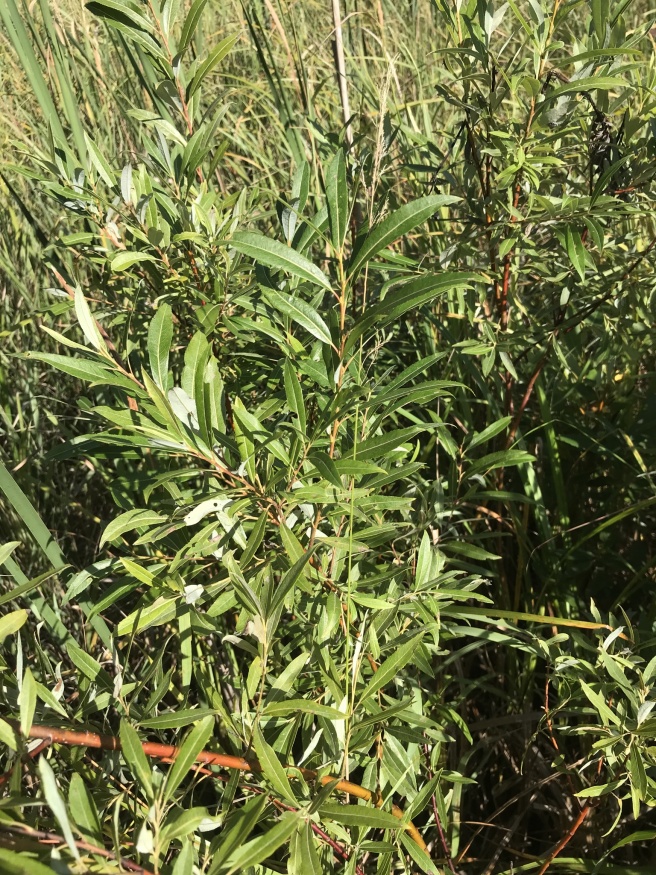Meadow Willow

Family: Salicaceae Native to: Eastern North America, Interior North America
Hardy to zone: 2
Eco benefits: attracts pollinators
Natural habitat: swamps & bogs, floodplains
Shapes: multi-stemmed
Growth rate: fast
Common uses: naturalized plantings
Light: full sun
Transplanting: easy
Soil: moist and fertile, tolerates heavy clay, tolerates wet feet, wet
Reproduction type: dioecious
Meadow willow is a North American shrub reaching about 10ft in height. Typical of many willows, It is Fast growing, short lived, occurs in wet thickets, and is shade intolerant.

Leaves are long and narrow with pointed bases and tips. Dullness, shinyness and whether they are toothed can vary. Twigs are upright, flexible, yellowish, and somewhat hairy. Flowering happens in May and flowers are pollinated by bees and other insects. Seeds are released in June.
Meadow willow propagates easily by cuttings and can be coppiced (grown to harvest its stems) for use in basket making.
Salix geyeriana is similar in appearance and can be difficult to tell apart from Salix petiolaris.
References
E-Flora BC. (n.d.). Salix petiolaris Sm. Retrieved from http://linnet.geog.ubc.ca/Atlas/Atlas.aspx?sciname=Salix%20petiolaris
Natural Resource Conservation Service. (n.d.). Salix petiolaris Sm. meadow willow. Retrieved from https://plants.usda.gov/core/profile?symbol=SAPE5
Plants For A Future. (n.d.). Salix petiolaris - Sm. Retrieved from https://pfaf.org/user/Plant.aspx?LatinName=Salix+petiolaris
Tree Canada. (n.d.). Meadow willow (Salix petiolaris). Retrieved from https://treecanada.ca/resources/trees-of-canada/meadow-willow-salix-petiolaris/